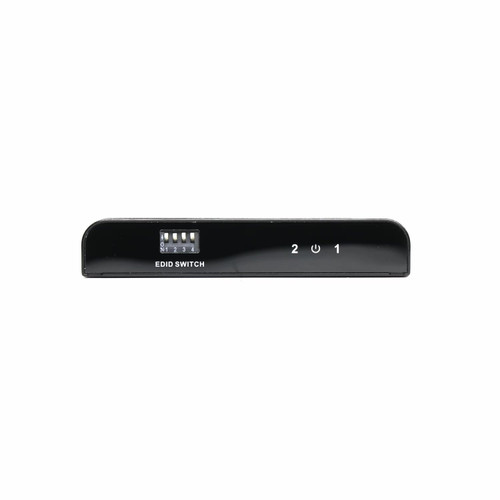This HDMI Splitter 1x2 sends one HDMI device to 2 - widescreens. It supports the new 4K×2K resolutions and has a built-in HDMI booster.
HDMI Splitter 1x2 Features:
- One HDMI input signal split to two HDMI devices
- Connects up to 2 HDMI displays at the same time from a digital video source.
- Support up to 3D, 4K 30Hz 4:4:4, 12-Bit deep color.
- Built in EDID learning/integration function.
- Support LPCM 7.1、Dolby TrueHD、DTS-HD Master Audio.
- Bandwidth: 25~340 Mhz.
- HDMI 1.4a compliance, HDCP 1.4 complaint.
- DVI 1.0 compliance.
- Supports xv-YCC.
- Digital audio formats: DTS-HD, Dolby-True-HD. LPCM7.1, AC3, DTS and DSD.
- Supports HDMI signal retiming with cascading above 3 layers in full-HD 1080p format and 2D and 3D
- Supports an input HDMI cable up to 15 meters @ AWG24 HDMI standard cable length and an output up to 25 meters.
- No video or audio loss of quality.
- Installs in minutes.
- Includes power supply
Why not buy this HDMI Splitter 1x2 today?
Q: What is 4Kx2K?
A: The HDMI 1.4 specification adds support for extremely high video resolutions that go far beyond today's 1080p systems. 4Kx2K, 4K for short, is 4,096 lines wide by 2,160 lines high or roughly four times the resolution of a 1080p display and is double the number of lines of a typical HD picture, and more than double the number of pixels across the screen – so over four times the resolution. This HDMI Splitter 1×2 has been designed to support 4K as it has four times the signal bandwidth and memory needed for 3D that doesn't require glasses. It supports todays needs and future 4K products.
A: The HDMI 1.4 specification adds support for extremely high video resolutions that go far beyond today's 1080p systems. 4Kx2K, 4K for short, is 4,096 lines wide by 2,160 lines high or roughly four times the resolution of a 1080p display and is double the number of lines of a typical HD picture, and more than double the number of pixels across the screen – so over four times the resolution. This HDMI Splitter 1×2 has been designed to support 4K as it has four times the signal bandwidth and memory needed for 3D that doesn't require glasses. It supports todays needs and future 4K products.













